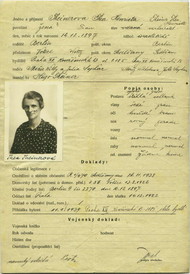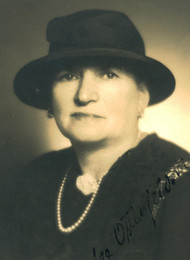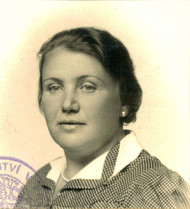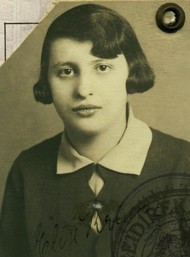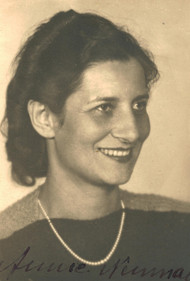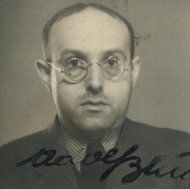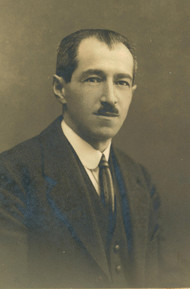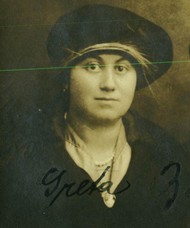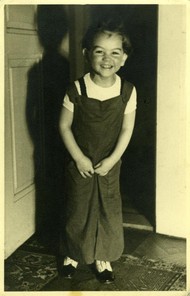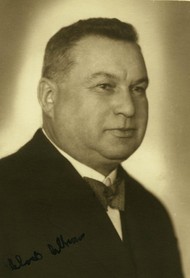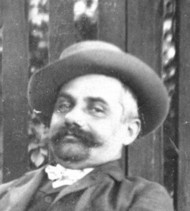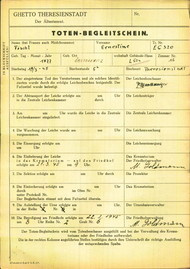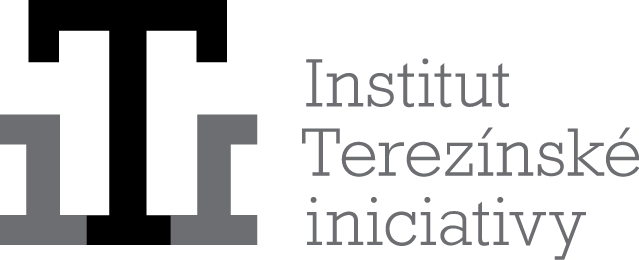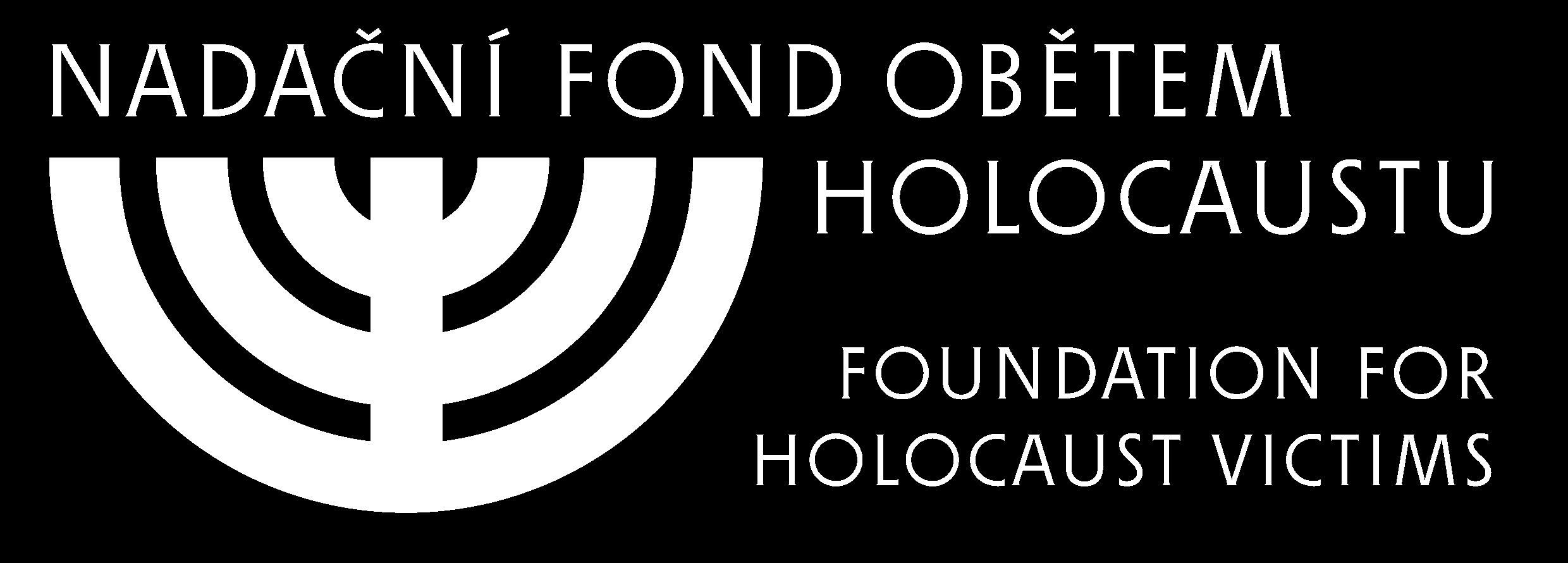On the night of the 14th of March 1939, Nazi-German troops crossed the Bohemian border. Under pressure from Berlin, Czechoslovak President Emil Hácha was forced to agree to the Nazi occupation of the Czech lands. On the 16th of March, the Protectorate of Bohemia and Moravia was declared by Adolf Hitler (link in Czech) in Prague. The Czech lands were subjected to German rule, and Czechs were allowed only limited autonomy. The Protectorate was headed by the ReichsprotektorKonstantin von Neurath..
At the time of the establishment of the Protectorate of Bohemia and Moravia, there were 118 310 Jews living on its territory, according to official statistics. Of these, 103 960 declared themselves to be of Jewish faith. The rest were of other faiths, or none.
The Nazis were able to use in the Protectorate the methods of persecution and the separation of the Jewish population that they had already tested in Germany, as well as in annexed Austria. The Protectorate government also wished to show its influence on anti-Jewish policy, and was above all interested in transferring Jewish property into Czech hands. In this way it hoped, among other things, to prevent the much-feared Germanization. Following the creation of the Protectorate, it was therefore not long before the rights and freedoms of the Jewish population began to be limited. Following the occupation, the anti-Semitism of the Second Republic immediately grew into systematic anti-Jewish policy.
In the beginning of the occupation, radical right-wing organizations - such as the fascist Vlajka (Flag) movement - tried to profit from the new situation, believing they would be given free rein to carry out anti-Jewish violence. There was a proliferation of attacks on Jewish buildings (synagogues) and on individual Jews. In spring 1939 for example, fascists burnt down the synagogue in Jihlava, damaged the synagogue in Dobříš and carried out an anti-Jewish pogrom in Příbram. Severe anti-Jewish riots were reported in August 1939 in Brno, where a number of Jews were brutally attacked and beaten. On the other hand, it should be mentioned that the Czech security services usually intervened against anti-Semitic rioters, and that the actions of the Czech fascists did not gain mass support.
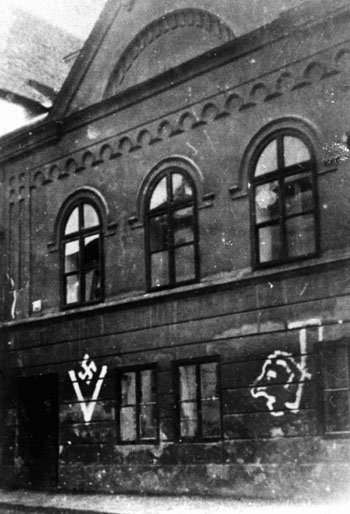
The synagogue in Třeboň, painted with a swastika and a caricature of a hanged Jew. (Photo:Archive of theJewish Museum in Prague.)
At its first meeting, the Protectorate government banned Jewish doctors from practising in public institutions, and noted the suspension of Jewish attorneys' practices implemented by the attorneys' chamber. Jews were to be removed from all positions of leadership in industrial companies and other organizations. The government approved the issuing of special labels to indicate Aryan shops. Other measures taken by the Protectorate government aimed to prevent free dealing with Jewish property and ensure that it was taken into Czech administration. However, this was not approved by Reichsprotektor Konstantin von Neurath, since the occupation authorities and German industrial circles did not want to allow Aryanised Jewish property to fall into Czech hands.
Instead, on the 21st of June 1939, the Reichsprotektor issued his own decree on Jewish property, in which the race criteria of the Nuremberg Laws (link in Czech) were used for the first time in the Protectorate to define Jewishness. The Reichsprotektor thus took the initiative in anti-Jewish legislation into his own hands. The decree banned Jews and Jewish companies from dealing freely with their own property, and the Reichsprotektor introduced forced administration into Jewish companies. The very broad definition of Jewish property and Jewish companies allowed the occupation authorities to Germanize a large proportion of Czech companies through the Aryanization policy.
The Nazi authorities initially supported Jewish emigration, and tried to force as much of the Jewish population as possible to flee abroad. Emigrants had to pay high fees for their path to freedom, and had to leave all their property in the Reich. In July 1939, the Centre for Jewish Emigration was set up, based on the Viennese model of Adolf Eichmann (link in Czech), and from this point on represented the only legal form of emigration. In a procedure that was complicated and humiliating for the applicant, the centre completed the formalities for emigration, handled the seizure of emigrants' property and also supervised the Jewish religious community.
Emigration was becoming more and more difficult, however. The number of states prepared to take in Jewish emigrants was continually decreasing. The Western countries, defending themselves against a tide of refugees from Germany and the German-occupied countries, established very low yearly limits. This was also true of Palestine, where members of Zionist organisations in particular sought to go. After the war started, the number of possible destination countries decreased even further. In the end, emigrants were reliant on the countries of South America and the city of Shanghai. The numbers of emigrants also continued to sink. While in 1939, 19 016 Jews left the Protectorate legally and in 1940 another 6 176, in 1941 the number was only 535 and during the following two years only 93 people left. In all, therefore, a total of 26 093 Jews left the Protectorate legally. To these must be added those who fled the Protectorate illegally, above all to Poland and, after Poland was occupied, to Slovakia. It is estimated that a total of 30 000 Jews fled the Protectorate in all. A number of them later became involved in foreign resistance movements. Some of them were overtaken by the Final Solution to the Jewish question
in other German-occupied countries or countries within the Nazis' sphere of power. In the transports from France to Auschwitz alone, over 600 former Czechoslovak citizens were sent to death.
-
Literature
-
Pasák, Tomáš. Český fašismus 1922-1945 a kolaborace 1939-1945 (Tschechischer Faschismus 1922-1945 und Kollaboration 1939-1945). Praha: Práh, 1999. 486 s.
-
Milotová, Jaroslava. Ústředna pro židovské vystěhovalectví v Praze. Geneze a činnost do počátku roku 1940 (Die Zentralstelle für jüdische Auswanderung in Prag: seine Entstehung und Tätigkeit bis Anfang 1940). Terezínské studie a dokumenty. 1997.
-
Černý, Bohumil. Emigrace Židů z Českých zemí v letech 1938 - 1941 (Jüdische Auswanderung aus den tschechischen Gebieten von 1938-1941). Terezínské studie a dokumenty. 1997, s. 181-189.



